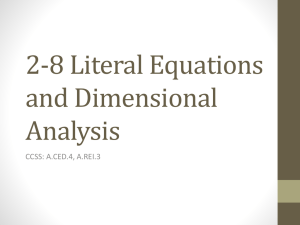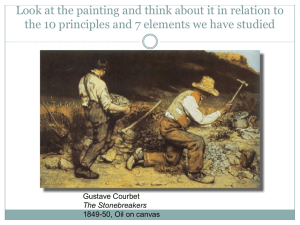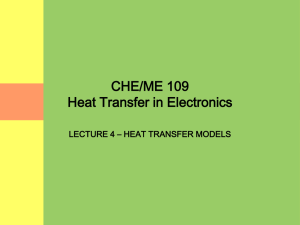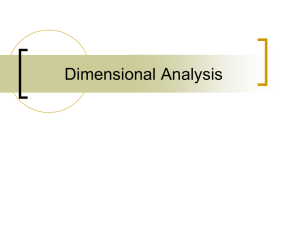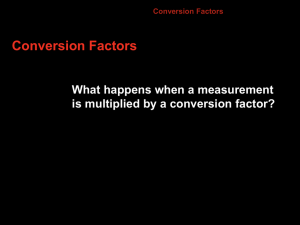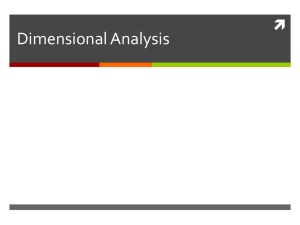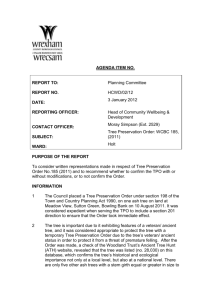Document
advertisement
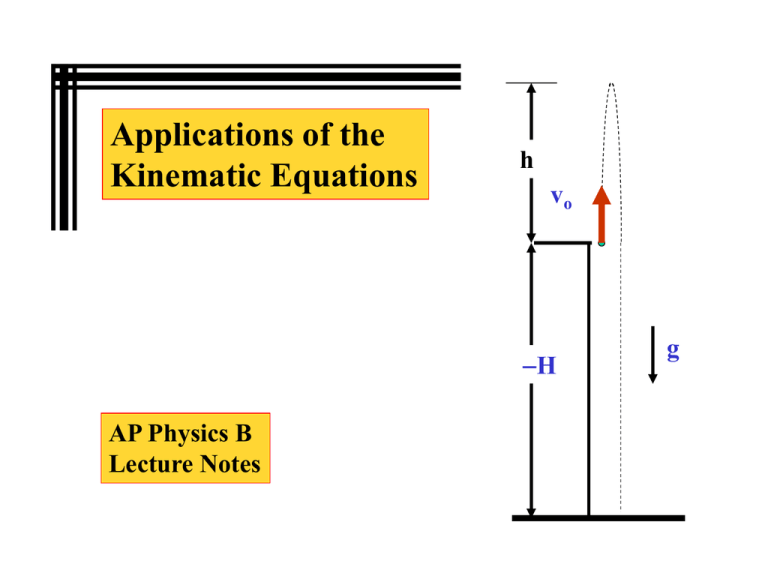
Applications of the Kinematic Equations h vo -H AP Physics B Lecture Notes g One Dimensional Motion H = -50 m What is the maximum height the ball reaches? vo =30 m/s g = -9.8 m/s2 h v2f = v2o + 2a Dx vo 0= H g v2 o + 2(g)h vf = 0 a=g h = Dx -h =v2o/2g -h 30 m/s 2 2 2 -9.8 m/s = 45.9 m 2 One Dimensional Motion H = -50 m vo =30 m/s How much time to reach the maximum height? g = -9.8 m/s2 h vf = vo + at vo vf = 0 xo 0 a=g 0 = vo + (g)tr H g t = tr tr vo g -30 m/s t r 2 -9.8 m/s = 3.06 s 3 One Dimensional Motion H = -50 m What is the speed of the ball at xo = 0? h g = -9.8 m/s2 v2f = v2o + 2a Dx vo xo 0 H vo =30 m/s g v2f = v2o + 2a 0 a=g Dx = 0 v2f = v2o vf = -30.0 m/s 4 One Dimensional Motion H = -50 m vo =30 m/s How much time to reach the xo = 0? h vo g = -9.8 m/s2 vf = vo + at vf = -30 m/s a=g xo 0 vf = vo + at1 H g t = t1 -30 m/s = 30 m/s + (-9.8 m/s2)t1 t 1 -60 m/s 2 = 6.12 s -9.8 m/s 5 One Dimensional Motion H = -50 m What is the final speed of the ball? vo =30 m/s g = -9.8 m/s2 h v2f = v2o + 2a Dx vo xo 0 H g v2f = v2o + 2a -50m a=g Dx = H v2f = (30 m/s)2 + 2(-9.8 m/s2 -50m vf = -43.36 m/s 6 One Dimensional Motion H = -50 m How much total time in the air? vo =30 m/s g = -9.8 m/s2 h vo vf = vo + at vf = -43.36 m/s a=g xo 0 vf = vo + atT H g -43.36 m/s = 30 m/s + (-9.8 m/s2)tT t -vf t = tT 1 -73.36 m/s 2 = 7.49 s -9.8 m/s 7 One Dimensional Motion A motorcycle is moving at 30 m/s when the rider applies the brakes, giving the motorcycle a constant deceleration. During the 3.0 s interval immediately after braking begins, the speed decreases to 15 m/s. What distance does the motorcycle travel from the instant braking begins until the 2 2 motorcycle stops? v v 2ax f vf = 0 o v - vo a Dt v - vo 2 0 v o 2 x Dt 2 x- x- v o Dt 2 v - v o 30 m/s 2 3s 215 m/s - 30 m/s = 90 m 8 One Dimensional Motion A sprinter has a top speed of 11.0 m/s. If the sprinter starts from rest and accelerates at a constant rate, he is able to reach his top speed in a distance of 12.0 m. He is then able to maintain this top speed for the remainder of a 100 m race. What is his time for the 100 m race? 11 88 m 12 m t1 t2 t 9 11 88 m 12 m t1 0 vo vf v avg 2 x 2 vf t 2 t t2 x1 t1 212 m t1 2x1 vf 11 m/s t2 x2 88 m vf 2.2 s 8.0 s 11 m/s t t1 t 2 10.2 s 10 One Dimensional Motion On a dry road a car with good tires is able to brake with a constant deceleration of 4.92 m/s2. If the car is initially traveling at 24.6 m/s, (a) how much time is required to stop? 0 v f v o at v o - 24.6 m/s t2 - 4.92 m/s a 5s (b) how far does it travel in this time? 02 2 v f v o 2ax 2 x- vo 2a - 24.6 m/s 2 2 - 4.92 m/s 2 61.5 m 11 One Dimensional Motion The maximum acceleration of a subway train is 1.34 m/s2, and subway stations are located 806 m apart, (a) what is the maximum speed a subway train can attain between stations? (m/s) a = 1.34 m/s2 vmax 403 m 403 m t (s) 12 (m/s) a = 1.34 m/s2 vmax x1 = 403 m x2 = 403 m t (s) 0 2 2 v max v o 2ax1 v max 2ax1 2 1.34 m/s 2 403 m v max 32.9 m/s 13 (m/s) a = 1.34 m/s2 vmax v max 32.9 m/s x1 = 403 m x2 = 403 m t1 t2 (b) what is the travel time between stations? (s) 0 t t1 t 2 2t1 v max 2 v max 232.9 m/s t 2 1.34 m/s a v max v o at1 t1 t a t 49.1 s 14 One Dimensional Motion END
